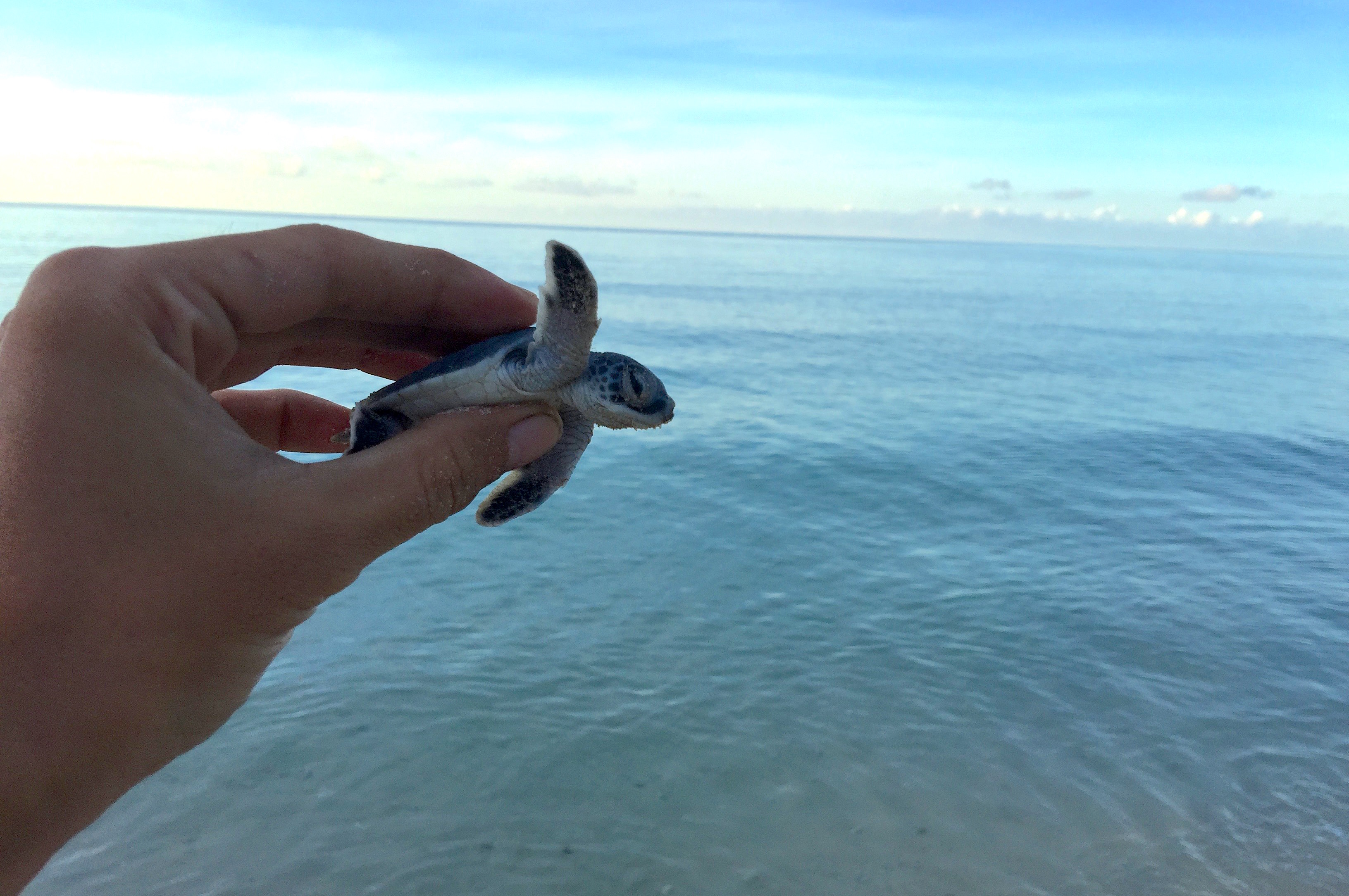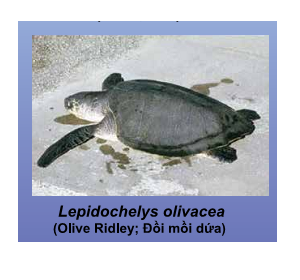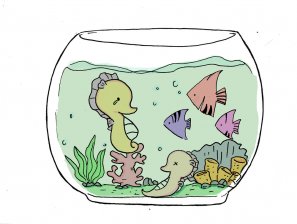Sea Turtles
Did you know sea turtles are one of the oldest species on the planet? They have existed in oceans worldwide for as long as 220 million years even before dinosaurs came to exist!

1. Understanding sea turtles
Sea turtles are members of the reptile family, and they resemble freshwater and land turtles. However, unlike land turtles, sea turtles cannot retract their heads or limbs into their shells. Their four limbs function as paddles to move around underwater.

They mainly prey upon jellyfish, crabs, seaweed, invertebrates, and sponges.
Where do sea turtles live?
Most of them live in equatorial and tropical regions, except for leatherbacks, which could live in temperate regions with a lower sea temperature. These turtles live in seagrass beds, coral reefs, and beaches. Sea turtles usually rest on the surface of the ocean, deeper levels, or underneath rocky formations. Many divers have seen turtles sleeping in rock and coral reefs.
A sea turtle’s life
In the wild, a sea turtle can live a very long life, up to 80 years.
 These turtles migrate hundreds, sometimes thousands of kilometers from their habitat to breeding sites. Female sea turtles swim across oceans to lay eggs on the beach, and this is the only period in their life cycle when they are not underwater. The females dig holes in the sandy banks with their flippers and fill the nest with a clutch of about 70-190 eggs. These eggs will take from 6 to 10 weeks to hatch, depending on environmental conditions.
These turtles migrate hundreds, sometimes thousands of kilometers from their habitat to breeding sites. Female sea turtles swim across oceans to lay eggs on the beach, and this is the only period in their life cycle when they are not underwater. The females dig holes in the sandy banks with their flippers and fill the nest with a clutch of about 70-190 eggs. These eggs will take from 6 to 10 weeks to hatch, depending on environmental conditions.

Sea turtle is laying eggs in Con Dao. Photo: Đặng Đỗ Hùng Việt
The sex of the turtles is determined by the temperature of the sand where they are born: if the temperature falls under 30°C, the hatchlings will become male, and warmer temperatures produce female hatchlings. The baby turtles, with an innate sense of direction, break free of their shells and head to sea for their life journey.

A young turtle prepares to return to the sea. Photo taken by Cao Manh Tuan from the contest "One Ocean, One Future" (U.S. Embassy, 2016)
They will then live in deep sea areas until they are 5 to 10 years old. When they grow to about 20cm - the size of a plate - the turtles come back to shallower waters and live in their typical habitats. Due to the myriad dangers that a turtle face, only one turtle in 1000 or 10000 survives into adulthood.
When they are of reproductive age, both males and female’s turtle would migrate to breeding sites near where they themselves were born and continue the cycle. This ability to remember and navigate to their birthplace, as well as the female’s reasons for choosing a certain breeding site remain mysteries to be solved by the scientific community.
2. How many species of sea turtles are there?
There are seven species of sea turtles, such as:
- Loggerheads, named for their oversized heads
- Hawksbill, named for their distinctive beak, which is sharp and curving, similar to a hawk’s beak
- Leatherbacks, named after their lack of a bony shell and a covering of elastic skin. This species holds the world record for the biggest turtle ever.

Leatherbacks can be as big as a car
- Olive ridley, named for their olive-green carapace
- Green, named after their greenish fat between their inner organs and their shell
- Flatbacks, named after their flat carapace
- Kemp's ridley, named after Richard Kemp, the scientist who discovered and studied this species.
All seven of these species are on the IUCN Red List of Threatened Species, and most countries have legislations against hunting and trading them.

Photo: IUCN

Photo: IUCN
Sea turtles are considered to be crucial to the ocean, because they function in key roles within their biomes.[1]
- Green turtles help to regulate the ecosystem of seagrass meadows by trimming the top of the plant, thereby improving the growth and health of the grass beds. The feeding also removes other types of sea-dwelling plants and decreases the density of invertebrates.
- Hawksbills clean up sponges in coral reefs with their strong jaws, allowing for baby corals to grow and stabilizing the reefs
- Leatherbacks maintain the marine food chain. By preying on jellyfish, they can help increase the number of fish eggs and fish hatchlings, which are main sources of food for jellyfish. When the population of leatherbacks decreases, so do the number of fish.

Photo: IUCN

Photo: IUCN

Photo: IUCN
In Vietnam, five out of the seven mentioned species can be found; within these fives, greens, olive ridleys, hawksbills, and leatherbacks have reproduced on Vietnamese coasts. Loggerheads have only been found foraging for prey.
3. A decreasing population of sea turtles[2]
Currently, sea turtle populations, both worldwide and in Vietnam, have been increasingly endangered. All five of the aforementioned species are found in Vietnam’s 2007 Red Data Book.

The leatherback is a species that was prevalent in Vietnam’s territorial waters, with 500 females hatching per year on average. However, in recent years, there are only 1-2 hatching females found in Central Vietnam, and almost none can be found in other areas.
Moreover, olive ridleys, once prevalent in Bai Tu Long and Central provinces from Ha Tinh to Phu Yen, are close to extinction: every year, there are only about ten females that come to beaches (including Bai Tu Long, the Son Tra archipelago, Quang Binh provinces) and lay their clutch.
Finally, green turtles, the most common species in Vietnam’s territorial waters, are also facing eradication. While in the 70s, about 100 females hatched on the Northern Bays, 500 on islands near the South Central Coast (from Quang Nam to Ninh Thuan), 230 on Con Dao, and 100 on islands in the Gulf of Thailand annually, since then these numbers have plunged in all of these areas. Aside from Con Dao, there are only a few individuals left.

One of the biggest sea turtles hunting and trapping lines in Vietnam has been destroyed. Photo: Education Center for Nature and People ENV 2014
In fact, sea turtles are always in danger of a decreasing population. In the wild, the rate of surviving into adulthood for these animals is low, since both eggs and hatchlings are easy prey. They also have an increased risk of developing malignant tumors. Populations along the coast of Vietnam have also been affected by human development: they are caught to be processed into food, medicine, trinkets, taxidermies, and trapped by floating garbage like plastic bags. They also suffer damage upon contact with fishing nets or boats, and their living habitats have been restricted by seaside industries.[3]
So let us find out how turtles are being protected in Vietnam.
4. What can we do?
- The blue whale is the largest known animal on Earth. A blue whale can weigh up to 200 tons and be 33m in length, which makes it the size of a Boeing 737!
- The sailfish is the biggest and fastest ocean fish. An adult sailfish can weigh 680kg and swim at 88km per hour - equivalent to a car on the highway.
- Many fishes can change their sex. Especially those that live deep under the sea are hermaphroditic, meaning they have both male and female reproductive organs.
- Vietnam has many rare marine creatures. However, many like sea turtles, manatees, have dwindled significantly in number and under the threat of extinction according to the International Red List (IUCN). Let’s learn about these creatures and how to protect them!


